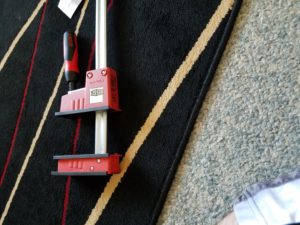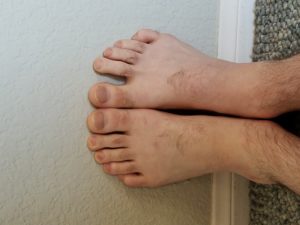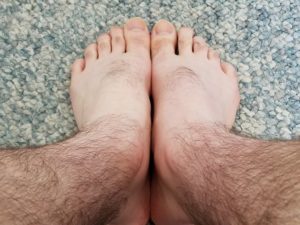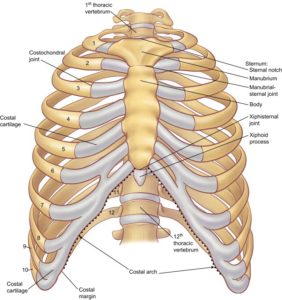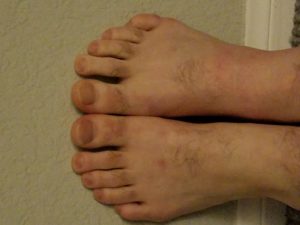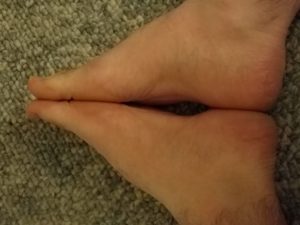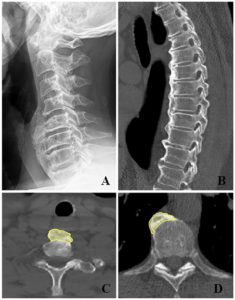Due to the subject which we focus on, the types of websites and web forums that link to the website are often very unusual and un-tasteful for many people. The most common type of websites that link to our site are from sites where you have angry, single, lonely young men in their teens and early 20s who think that their lack of dating life and romance is due to their physical appearance. Maybe some of them are right and accurate in that assessment, but a lot of the guys on those places that discuss what is written on our website are often suffering from body dysmorphic disorder. Beside just complaining about how short they are, they also complain about how their facial bone structure is not perfect ie. modelesque. The word “manlet” is thrown around and jokes are made about how even guys who are 6′ 3” are not tall enough anymore, which is definitely not true and not align with reality, at least in the USA. (I am talking about the sites, Lookism, Sluthate, etc. which are not just healthy to visit or read for the normal average male)
Besides trying to grow taller, they also want to have wide jaws, high cheek bones, pronounced chins, more pronounced nose, the right forehead angle, and sometimes even talk about changing their ethnicity. These guys are just not happy with the way they look.
This website has been around for almost 5 years now, and if I also consider the fact that Tyler has brought over many blog posts he has written over the years since the early 2000s, this website has information that may be even a decade old. So in terms of the internet space, this website is the most definitive guide on the subject of height increase on the internet, at least that is written in English. Maybe there is something else like this website in another language which has the same level of authority, but I haven’t found it.
What that means is that there are quite a few guys who read the major posts and they have sourced us. The biggest, most obvious and easiest option for height increase we have stated is Glucosamine Sulphate (although I just recently showed that taking Collagen Hydrolysate was just as important).As for the exact brand of Glucosamine Sulphate to take, I personally take the Dr Joints Advanced, which was what was recommended to me by a guy who worked at a GNC close to where I live who claimed to also teach biology courses at the local university part time.
There was a famous randomized, double blind, placebo controlled study which is always sourced to validate the idea that glucosamine sulphate is effective (the results showed on average about 3 mm of increase after 8 weeks of taking 1500 mg every day), which was also the same source used in an article written by the DailyMail UK entitled “Can This Pill Make You Taller after 4 Weeks?”.
For the longest time, in the online community, from 2000 to 2013, no one was able to validate the Glucosamine Sulphate theory, since there was only anecdotal claims here and there over the years, made by people who had questionable credentials and motives. I found someone screaming about that study (McCarthy & Swindell (sp?), et. al.) on another online forum for others to look at. I read it, and reported it on this website. Since then, the compound has become the one thing that everyone has been stating which really does have high efficacy rates as if it is some fact.
Recently, multiple sites that have linked to the website has had people claiming that it does work.
I frequent reddit a lot and in a recent reddit/r/tall post, some guy who listed himself as 6′ 5” made a claim that he has been taking glucosamine sulphate to reduce the amount of height loss from spinal compression over the day (aka diurnal variation). I can’t find that exact link for that particular r/tall thread. I did clip a picture of the post but it is somewhere in my hard drive, which is a mess right now. This shows that Glucosamine has this ability to mitigate the amount of height loss.
When you consider the fact that so many americans seem to have joint problems and lower back pain, which is the result of gradual loss and degradation of articular cartilage at the end of bones and collagen/water/ECM in the intervertebral spinal discs/annulus fibrosus, taking Glucosamine everyday even starting out as early as in your 20s doesn’t seem like such a bad idea.
So many americans seem to love going to the gym, working out, and bodybuilding. They like to max out on their bench press, deadlift, and squats. I have seen too many Youtube videos of guys who have put on 40-50 extra lbs of muscle to look as wide as possible and they would do squats with 400 lbs or more on their back.
That amount of weight on one’s body is horrible for the joints. I am always reminded of the story my friend told me years ago. His mother and aunt were both huge runners when they were younger (20s and 30s) but now that they are in their 50s and 60s, they have all this joint pain from so much pounding they did on their knees for so long.
From one source – http://lookism.net/Thread-Apparently-glucosamine-sulphate-makes-you-3cm-taller-within-a-month
A guy who claims to be 1.86m tall at night but wanted to be 1.90m said that we said glucosamine sulphate would give 2-3 cm is wrong! The results of the study showed an average of 3 mm, not cm. That person is a full order of magnitude off in reporting. If we said it was cm, and not mm, then I have to apologize for that error in reporting. But the results were 3 mm.
From other source – https://www.reddit.com/r/short/comments/5p2gu5/do_glucosamine_or_mens_huss_help_people_to_retain/
A poster calling himself Jack_Coppit said…
“I have a little experience with these sort of supps and aminos, for some back ground I am 21 and have never had a growth spurt, just grew slowly and gradually. My Father was the same and grew until he was 25. I started taking glucosamine sulphate around 2-3 weeks ago, 2.4gs Glucosamine which was made up by 3 1000mg capsules of glucosamine sulphate. Now my height has indeed increased. Which may sound silly. However prior to taking the glucosamine, I have been taking 5 grams of L-Arginine a day for 3.5 months, and continue to do so. L-Arginine has been proven to raise your resting HGH levels and can do so even more depending on whether you exercise or if you have an empty stomach when taking it.
I started by changing up my diet, and making sure I ate foods that were perfect for raising HGH and maintaining high levels throughout the day and throughout the night. I started this thinking I was a solid 5’8, but discovered that at the end of the day I was approx 171cms 5’7. Now however, my morning height peaked at 176cm 5’9 and my evening height is 174cm. Now whether this is improved posture or with stretches I do not know, but even with days off from stretching, maybe 4 at a time, I am maintaining this height. This also could just be natural growth due to my genes allowing me to grow after 21. Who knows. All I know is that I have 100% grown during this time, I measure my eye level against things I see in real life, my 5’4 Girlfriend now has to look up to me slightly more now when I stand straight, the shelf at work I can look over a little more, and the pains I get do seem to be growing pains. TLDR; 3 grams of Glucosamine sulphate and 5 grams of L-arginine = 3cms growth in 3-4 months. 0.75cms a month currently”
He noted that the Glucosamine does thicken the cartilage at the end of bones, which does seem to be true.
From a 3rd source – http://lookism.net/Thread-HeightGuide-How-i-elongated-my-spine-and-reduced-height-loss
This guy who basically says he is 6′ 7” or exactly 2.024 m (which is actually 6′ 7.5” to be more exact) gained over 4 cm of height from taking Glucosamine and sticking to this specific routine.
– Hanging from a bar for 1 minutes 5x in the morning and 5x in the evening – total of 10-15 minutes a day
– Upside down hanging with gravity boots with same intervals as above
– Glucosamine – 2000 mg a day
– Posture exercise – https://www.youtube.com/watch?v=LT_dFRnmdGs
– Constant hydration
Morning height increase from 1.983 meters to 2.024 meters. Evening height went from 1.954 meters to 1.999 meters. Notice however that before, the loss over the day was 2.9 cms while after taking the glucosamine the loss of height over the day was only 2.5 cm!!
>This is key right here. Even if we negated everything else and assumed that 4 cm of extra height was just normal natural growth, the reduction in loss over a day shows that oral consumption of Glucosamine does have noticeable effects.
This is his breakdown of the 4 extra cm…
1 cm from glucosamine
0.5-1 cm from hanging
close to 2cm from gravity boots
0.5-1cm from posture exercises
These are the conclusions this young lad made…
Glucosamine reduced height loss and was mostly responsible for maintaining evening height.
Hanging and upside down hanging enlongated my spine which increased overall height.
The taller you are the more height you will gain from this.
A 7’5′ person might gain 6-7cm and a 5’8 cm person only 3cm.
In response to what this guy claimed, a poster noted that after being on Glucosamine for 4 months, he probably gained around 5-10 mm at most, which when you think about it is enough of a gain to be more than just variation error. The guy claimed to be 190.5 cm tall at night, and that he would loss as much as 3-4 cm over the day, which is quite sizable. Him taking Glucosamine seemed to have fixed his ruptured discs problem and helped ease his back and neck pain. He sorted of admitted that it is possible that glucosamine may indeed reduce the amount of loss in height over the day, but not increase the morning height. He would late admit that it was not a full cm but more like 0.5 cm, which is about what the original study said (0.3 cm)
The original poster did note that astronauts in zero-gravity can gain 2-3 inches of extra height (that is true), so his routine which includes hanging on a bar can probably help increase a normal increase of only 3-5 mm to something more.
Personal Thoughts and Conclusion
Glucosamine definitely works in increasing height for some people. It is not a lot. The people who read this site and actually bought it and started taking it,, and stayed with it on a routine has debated and almost argued on certain forums and websites just what is realistically possible. A lot of people say it it as little as 0.5 cm, Others like this guy who is now 6′ 7” claim that they got 4 cm, when they combined it with hanging, hydration, and stretching. 4 cm does seem extreme, and the original poster never did answer the question of just how old is he.
It does seem rather odd that a guy who is now 6′ 7” would have desires to be even taller. (I’ve heard storied before of guys who are 6′ 5″ and still wear lifts in their shoes. Guys over 6′ 0″, and often 6′ 2″ now regularly post on whatever bodybuilding forums that they don’t feel that tall and would like to be even taller if they had the chance. I don’t think there is any real way to stop this idea that bigger is always better, even for the biggest of men. “Rarely does a guy say, I am tall enough. I don’t want/wish to be any taller” No matter how big you are, there will always be someone bigger, unless you are actually the biggest in the world.) In his words, he wanted to be 1% of the population where he lives, or 6′ 9”. The way he is talking, it sounds like he is still in university in the Netherlands. He has claimed that the average height in the netherlands is 6′ 1.5” and that in the university, the guys average around 6′ 2” – 6′ 2.5”. Is this guy just height obsessed since he is already extremely tall compared to the rest of the world? I don’t know. We all have our own hang-ups. I don’t judge other people anymore since there is really no such thing as “normal”.
Side Note
There is this rather obscure video of the basketball player Blake Griffin getting his height measured at the Predraft Combine years ago (it can still be found on Youtube somewhere ). This was in the morning, and his height and weight were the first things that the doctors/trainers measured right after he got out of bed in his hotel room. So we can negate the factor that his height was decreased slightly from all the jumping and running around on the basketball court. Blake’s height is tabulated at 6′ 8.5” but in the video he said his height was 6′ 8.75”. Now, a quarter of an inch doesn’t seem like that big of a deal, but when you consider the fact that even half an inch of extra height could mean you get a couple of million more dollars a year (based on a slight bump in the draft), even a quarter of an inch can be worth discussing over. I remember really looking very closely at the video, to see whether he was 6′ 8.5” or a quarter inch taller. I personally would have given him that extra quarter inch from the video, although the guy who actually measured him was only a few inches away from the measuring tape.
My point is that if this young guy on the lookism website who claims to be 6′ 7” now can vary as much as almost a full inch over the day, it makes sense that many of these basketball players who are even taller, would have their height be even more varied.
When Magic Johnson asked Lebron in a recent video point blank just how tall he really was, Lebron said (and I quote) “about 6′ 8”. Lebron has been since his Senior Year in high school “about 6′ 8”. He is not actually 6′ 8” because there are plenty of videos where he walks through a normal US standard doorway without ever reflexively ducking,. The exact height of most US doors is EXACTLY 6′ 8”. This is a standard in door manufacturing. The doors themselves are always lifted about 0.3-0.8 cm off the ground, so the wood doesn’t scrap against the floor. So the top of all doorways is usually 6′ 8.5” – 6′ 9” tall. He has his head always shaved so you can clearly see the top of his head aligned with the top of any doorway. Lebron in shoes at 6′ 8” or slightly more has never once in any of the videos I have seen him touch the top of any normal doorway, ever. He often looks maybe half an inch off. He also never ducks. People who are tall enough to scrap the top of their head or have their hair touch the doorway would instinctively duck, from a lifetime of habit. Lebron never does that. That means that those predraft measurements you find saying he is really 6′ 7.25” is very accurate, with about a 0.25 inch of error factored in, similar to Blake’s measurement’s difference. It is very possible that Lebron is actually 6′ 8” right out of bed, and by the end of a day of jumping, squatting, weight lifting, and running he could be as low as 6′ 7” at the end of a day, which is a very reasonable amount of difference from diurnal variation. I have no doubt that he, as a professional athlete, who is probably the highest paid athlete in the world, who is said to use $1.5 Million a year just to maintain and treat his body, is probably taking some type of supplement mixture to make sure that his joints last as long as possible.
The entire point here is that especially for taller men, taking glucosamine probably has an even more pronounced effect than shorter men, since supplement consumption means that they will suffer from much lower rates of height loss over the day. Basketball players are the type of people who will have the most benefit from taking the supplement.
Next Post Will Be About Anti-Sclerotin vs Fluriprofen

